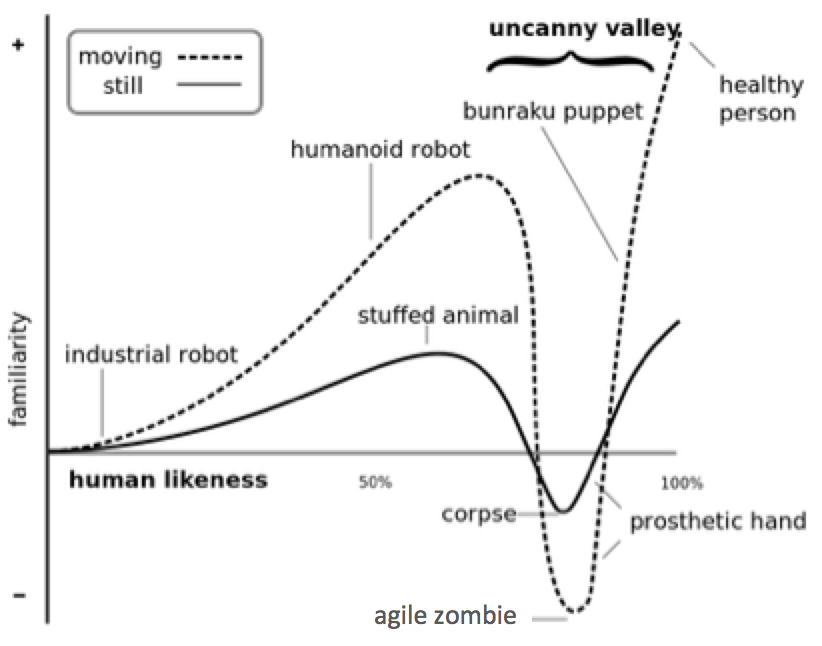Agile Smells Versus Agile Zombies in the Uncanny Valley
Code Smell
A code smell is a hint that something may have gone wrong somewhere in your source code. Martin Fowler included the term smell in his book Refactoring way back in 2000, referring to something that may not be right. Just because something smells, it does not mean there is a problem; it does mean, however, that there should be further investigation.
Agile Smell
Similar to a code smell, Agile smell is a hint that something may have gone wrong somewhere in your Agile practices. Be it a variation in the length of iterations, volatility in velocity, or having teams where the ScrumMaster is also the Product Owner, these smells are out there with every client I’ve met. The thing is, the further you get from textbook Scrum, the harder it becomes to sniff out potential problems.
Uncanny Valley
I don’t like to use the term smell. I prefer to say that you’re in “the valley”. I’m referring to the uncanny valley. When something looks and moves almost, but not exactly, like a healthy person, it causes a response of revulsion among some observers. The “valley” refers to the dip in a graph (see below) of the comfort level of observers. Ever watch Polar Express? Though it is a kids movie, it creeps the hell out of me and it makes me feel really uneasy. The characters look pretty real but their movement is just a little off and their eyes look dead. That uneasiness I feel is the uncanny valley. To that, I believe there is an Agile uncanny valley and it’s full of Agile zombies.

Agile Zombie
Potential problems with Agile practices are out there but many people are oblivious to them. I’ve seen customers rely on people who have certifications but no experience. I’ve seen customers rely on trainers or salesmen, who talk about ideal situations in a conceptual world. This is off-putting to me and I label that persona the Agile zombie. It’s like the Polar Express all over again. To smell problems at scale, you need coaches or consultants who have been dropped into multiple situations and have the tools and techniques to get a read on things lickedy split. This is one reason we do assessments. We need to know where you are. We may find you are doing a great job. We may also find you are deep in the valley.
Uncanny Agile Valley
People do or say things that sound benign on the surface but when you ask them why a few times, you realize something isn’t quite right. Do you conduct ceremonies or follow a governance but don’t know why? You may be in the valley. Do you hyperfocus on metrics without considering how they could negatively impact the behaviour of your teams or why you’re collecting the data? You may be in the valley. Do you structure your teams without thoughts of dependencies or scaling? You may be in the valley. Do you evangelize practices but don’t know if they are appropriate, based on organizational goals? That’s right, you may be in the valley.
Are you in the valley?

Comment (1)
Peti Morgan
Brilliant observation Derek – the Uncanny Agile Valley. I have seen Agile Zombies I just didn’t recognise them for what they were at the time. “They look pretty real but their movement is just a little off and their eyes look dead.” In other words, they appear to be doing and saying all the right things but something isn’t quite right. Observation is very powerful here :)